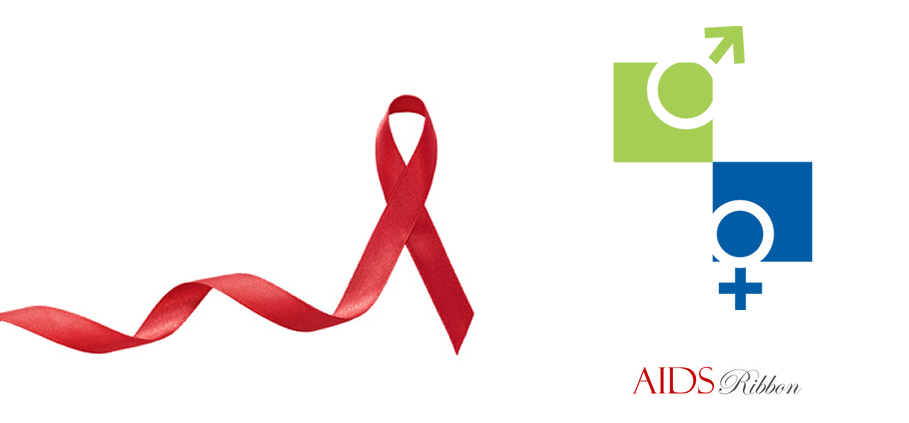Latest News
How can we protect our children and adolescents?
Childhood - adolescents and urological problems
Anastasios D. Kalantzis, Surgeon Urologist-Andrologist
In this passage we will address and analyze the urological problems and congenital anomalies diagnosed to children from their infancy and childhood up to adolescence. To begin with, I would like to elaborate on the term “Congenital anomaly”, in order for the content of this text, and consequently the problems that concern our children, to be more conceivable and understood. Therefore, “Congenital anomalies” have a prenatal origin and include structural or functional disorders (formation failures during fetal development). “Hereditary anomaly” concerns biological material, conditions, disorders or genetic abnormalities which are passed on or inherited from one generation to another.
Nowadays, with the development of technology and medical science, many of the problems and congenital anomalies of the urinary tract system can be detected and diagnosed even during fetal phase. Between 18th and 23rd week the most important ultrasound scan is performed, the so called Level II scan. Considering the fact that since the 5th month of pregnancy the urinary system is fully formed and functional, the specific ultrasound scan can very easily detect any deformities and congenital anomalies.
In rare cases the doctors decide to expedite the natural pregnancy cycle and proceed with induced preterm labor. In even rarer cases the doctors are forced to suggest termination of pregnancy, should they assess the condition as irreversible, when there is no possibility for improvement and the child’s future is uncertain.
Statistical data show that 12% of the prenatal diagnoses concern urinary reflux, while 88% concern urinary tract constrictions in various parts of the urinary system. It is comforting that in most cases the problems resolve spontaneously as the child develops, without any surgical intervention. Strange as it seems, these conditions hold 60% of surgical operations to children, and this is due to the fact that congenital urinary tract anomalies, together with the congenital cardiovascular anomalies are the commonest in the human organism.
There have been great progress and developments in the surgical techniques and the materials used, as well as the paediatric anaesthesiology, so that children and adolescence undergo minimum suffering from operations, hospitalization time is reduced and sometimes the children can go safely home after a few hours.
Puberty is the precursor of adolescence and lasts approximately two years, from 9 to 11 in girls and from 10 to 12 in boys. Adolescence lasts more years, from 11 to 17-18 in girls and from 12 to 20 in boys. Usually, from the age of 10 and beyond, the parents no longer see their children naked. In that period, therefore, some problems may develop which may escape notice. Consequently, at the age of 14 a thorough exanimation of the genital organs is necessary, especially in boys and more particularly before the first sexual intercourse. Also girls should be acquainted and examined by their gynecologist, who will talk to them about unwanted pregnancies as well as sexually transmitted diseases, if the parents have falsely neglected to do so.
Some of the conditions observed in pediatric and adolescent urology are:
- Phimosis: It is a condition in which the glans penis cannot be revealed due to preputial stenosis (stenosis or narrowness of the foreskin) that prevents retraction. Generally, 12% of men will undergo surgery because of phimosis. In case of serious congenital phimosis the child should be operated at the age of one year. The second major group of children is operated in adolescence. It is ideal that the surgical operation be performed in early age and definitely before the first sexual intercourse. The condition may cause problems with urination, pain during sexual intercourse, premature ejaculation, short erection, paraphimosis (inability to retract the foreskin in position over the head of the penis).
- Microphallia: It is a condition in which the length of the penis is abnormally small. The condition may be caused by hereditary predisposition, hormonal disorders or genetic abnormalities and may cause impotency and serious social and psychological problems and disorders.
- Hypospadias: It is the most common congenital abnormality of the penis. In this condition, the urinary meatus (opening) is abnormally located on the ventral aspect of the shaft (the scrotum or the perineum) rather than at the tip of the glans of the penis. It causes problems during urination, difficulty in sexual intercourse which may result to psychological problems. Restoration of hypospadias is achieved with surgical operation and the age of 4 years is consider the most appropriate, because at this age the penis has developed sufficiently and cooperation and communication with the child is more feasible. A similar type of birth defect is “Epispadias” which can be observed to people regardless of sex. In men, the only difference with hypospadias is that the urinary meatus is located on the dorsal aspect of the shaft.
- Congenital Urethral Valves: The congenital urethral valves cause obstruction of the prostatic urethra. This means that during urination these valves fall on the urethral tube causing valve obstruction of the urethra and allowing urine outlet only through the narrow opening they create. This obstruction results in the appearance of disorders in the operation of the bladder and the kidneys, and, at an older age, of sexual dysfunction. It is one of the severest diseases of pediatric urology. It is observed only in male babies and infants. Its treatment is surgical.
- Urethral Diverticula: The congenital urethral diverticula is a rare condition observed to both boys and girls. They are divided into sacular and spherical and cause urethral obstruction. They must be surgically removed.
- Double Urethra: Double urethra is a very rare condition. It can be complete or incomplete and in some cases it can be accompanied by duplication of the penis and the urinary bladder. Its treatment is surgical and depends of the type of duplication.
- Bladder Exstrophy: It is the most serious congenital urinary tract anomaly. It is characterized by a group of urinary tract, genetic, myosceletic and sometimes gastroenteric systems anomalies. One of the most serious types of bladder exstrophy is “cloacal exstrophy”. The treatment of these conditions is surgical and involves a series of corrective operations.
- Urachal Anomalies: This anomaly is accompanied by a partial bladder distention and its clinical manifestation is urine leakage from the navel, in parallel with the normal urination through the urethra.
- Cystic-Urethral Retrogression: It is a pathological condition, in which during urination or filling of the bladder, there is urine retrogression from the bladder back to the ureter and the corresponding kidney, resulting in the occurrence of urinary tract infections which, in most cases, are accompanied by high fever.
- Bladder Neck Stenosis (Νόσος Marion): This condition is rarely observed and there is doubt whether bladder neck stenosis really exists. It is considered to be caused by the development of a fibrous plexus on the bladder neck and is observed more often in boys. Treatment is surgical.
- Cryptorchidism: It is the condition when the testicle is not located in its regular position within the cavity of the scrotum, but in some other place of its normal descent from the kidney to the respective semi-scrotum. Anatomical, functional and hormonal disorders have been proposed at times as possible causes of the incomplete descent of the testicles. The absence of the testicle from the scrotum (the sac or pouch that contains the testes) can be easily identified during the clinical examination of the patient. The treatment is mainly surgical and the appropriate age recommended for the operation is the age of 2 years, since the early treatment of cryptorchidism is considered to be restricting the complications which ectopic testicles may present.
- Hydrocele: Hydrocele is the collection of fluid between the petals of the tunica albuginea of the testicle (pre-formed fibrous capsule covering the testes), which results in a, usually painless, swelling of the scrotum. In many cases the etiological factor cannot be identified, therefore it is an idiopathic hydrocele, while there are cases when the collection of fluid is a reactive manifestation of some testicular disease, in which case it is a secondary hydrocele (possibly existing testicular cancer). It requires surgical treatment.
- Varicocele: It is the varicose dilatation of the veins of the spermatic cord which results in the formation of a soft mass above the testicle (this is the stagnation of blood around the testis and is caused by the failing or insufficient function of some of the valves along the internal spermatic vein). Varicocele is usually asymptomatic unless it is very large, in which case the patient may experience pain or burden in the testis. Varicocele usually affects people of young age.
- Spermatocele: It is a small, soft cyst which contains accumulated fluid (mostly sperm) on the upper and rear part of the testis and is treated surgically.
- Scrotocele/Scrotal Hernia (Bubonocele): It occurs to men and protrudes through the internal inguinal ring, the point where the testis descends and reaches its final position in the scrotum. In some cases, the creation of scrotal hernia is the result of an anatomical abnormality and the failure of embryonic closure of the internal inguinal ring, or of a rupture of the inguinal ring upon great physical distress (lifting heavy weights, constipation, cough etc.). Treatment must be immediate and the restoration of the damage is achieved with surgical operation.
- Testicular Torsion: It is the contortion of the spermatic tone, the area which the nerves and veins ending to the testis go through (rotation of the testis around its axis). It is usually observed with children and adolescents of up to 18 years of age, it can, however, occur at older ages too. The symptoms are intense: pain, swelling of the testicle, as well as redness of the scrotum. Testicular torsion is a surgical emergency that needs immediate intervention. Severe implications of this condition are the loss (death) of the testicle and sterility. Immediate surgical treatment is required.
- Viral Testitis: Testicular inflammation which is usually an implication of another condition (chicken pox, parotitis, flu etc.) The symptoms are pain, swelling of the testis, redness in the scrotum, high fever. The condition is treated with administration of medication.
- Ureterocele: It is caused by an enlargement of the terminal ureter where its narrow opening joins the bladder, causing stenosis. This stenosis, however, is of a particular type, resulting in the terminal part of the swollen ureter forms a sac-like pouch inside the urinary bladder. In girls, ureterocele is combined, in a great percentage, with a duplex kidney condition, and in this case the stenosis concerns the ureter which drains the upper pole of the duplex kidney. In boys the condition is combined with single, normal kidneys drained by one ureter.
- Labial Adhesion: Adhesion of the labia minora or majora occurs in 5-10% of all girls. It is observed in absolutely normal girls, but also in girls of various ages with recurrent urinary tract infections and urinary disorders. It's when the inner vaginal lips (labia minora) fuse together appearing to close off the opening to the vagina, the urethra and, more rarely, the entire perineum. It is a common condition in prepubertal females and will surely resolve spontaneously when the girl enters puberty. If, however, the girl, regardless of her age, has recurrent urinary tract infections, has difficulty in learning to urinate properly or has incontinence, then the fused together labia minora should be separated. This is achieved with local anesthesia and is an easy procedure in the hands of a specialist.
Another serious condition is Enuresis (Bedwetting), the involuntary urine loss in bed during the night, and we refer to persons of 3 years of age and older. In 50% of the cases, the cause of this phenomenon is a developmental delay or a neurogenic bladder dysfunction. In 30% of the cases there is a psychogenic cause and the remaining 20% is the result of another condition.
Another congenital anomaly which is very rare (1 in 4,500 children) is “Sex Differentiation Disorder” (pseudohermaphroditism). It is the congenital adrenal gland hyperplasia and constitutes the commonest and most frequent cause for the appearance of sexual ambiguity (ambiguous genitalia).
The development of medical technology and the continuous acquisition of knowledge on fields such as genetics etc. can be our best allies in our effort to ensure a healthy future and a good quality of life for our children.




